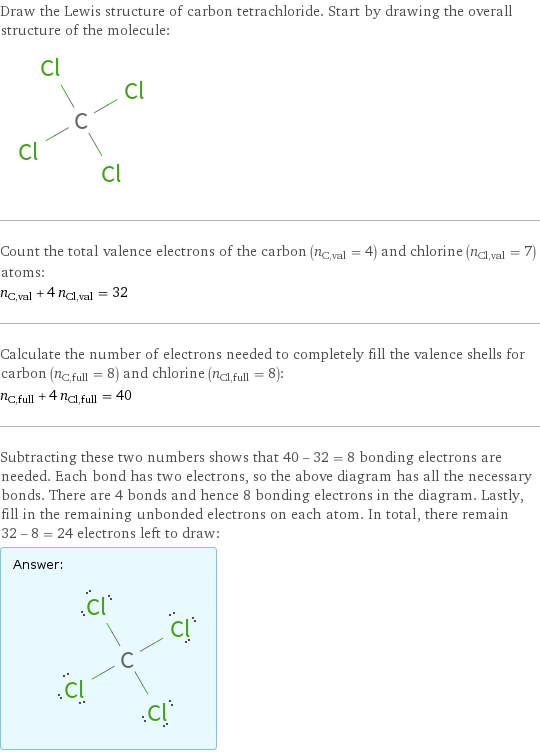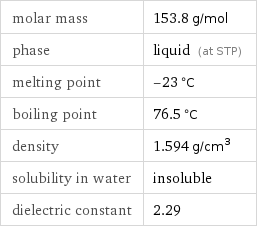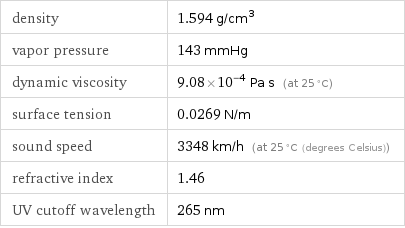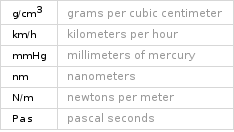Input interpretation

carbon tetrachloride
Chemical names and formulas

formula | CCl_4 name | carbon tetrachloride alternate names | benzinoform | carbona | necatorina | tetrachloromethane | tetrafinol | tetraform | tetrasol | vermoestricid mass fractions | C (carbon) 7.81% | Cl (chlorine) 92.2%
Lewis structure

Draw the Lewis structure of carbon tetrachloride. Start by drawing the overall structure of the molecule: Count the total valence electrons of the carbon (n_C, val = 4) and chlorine (n_Cl, val = 7) atoms: n_C, val + 4 n_Cl, val = 32 Calculate the number of electrons needed to completely fill the valence shells for carbon (n_C, full = 8) and chlorine (n_Cl, full = 8): n_C, full + 4 n_Cl, full = 40 Subtracting these two numbers shows that 40 - 32 = 8 bonding electrons are needed. Each bond has two electrons, so the above diagram has all the necessary bonds. There are 4 bonds and hence 8 bonding electrons in the diagram. Lastly, fill in the remaining unbonded electrons on each atom. In total, there remain 32 - 8 = 24 electrons left to draw: Answer: | |
3D structure

3D structure
Basic properties

molar mass | 153.8 g/mol phase | liquid (at STP) melting point | -23 °C boiling point | 76.5 °C density | 1.594 g/cm^3 solubility in water | insoluble dielectric constant | 2.29
Liquid properties (at STP)

density | 1.594 g/cm^3 vapor pressure | 143 mmHg dynamic viscosity | 9.08×10^-4 Pa s (at 25 °C) surface tension | 0.0269 N/m sound speed | 3348 km/h (at 25 °C (degrees Celsius)) refractive index | 1.46 UV cutoff wavelength | 265 nm
Units
